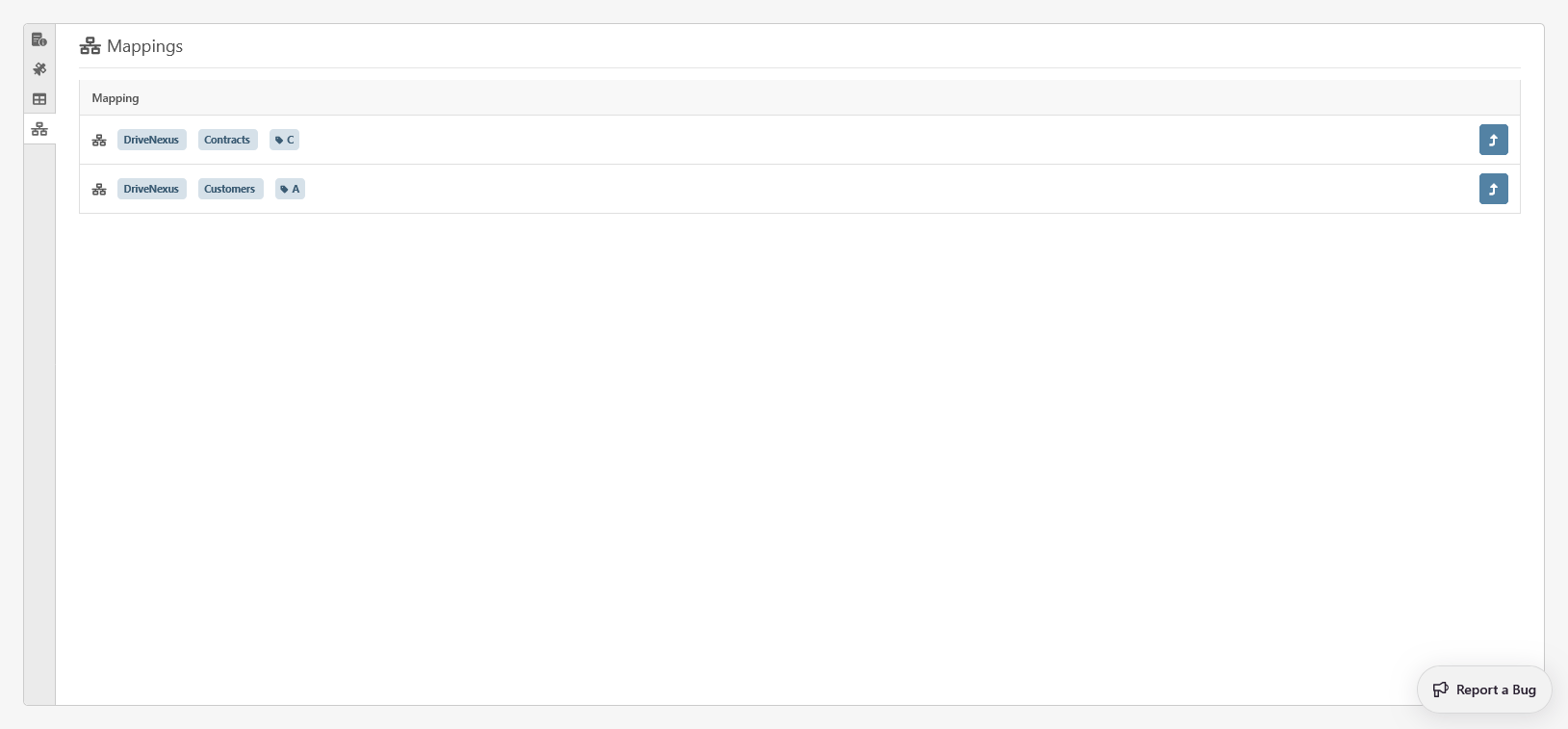The tab of a hub contains all the descriptive information about the hub, as well as some useful links to other concepts attached to the hub. It is divided into multiple sections:
-
Metadata
-
Satellites
-
Pit Tables
-
Mappings
Those sections can be explored by clicking on the buttons in the vertical menu on the left.
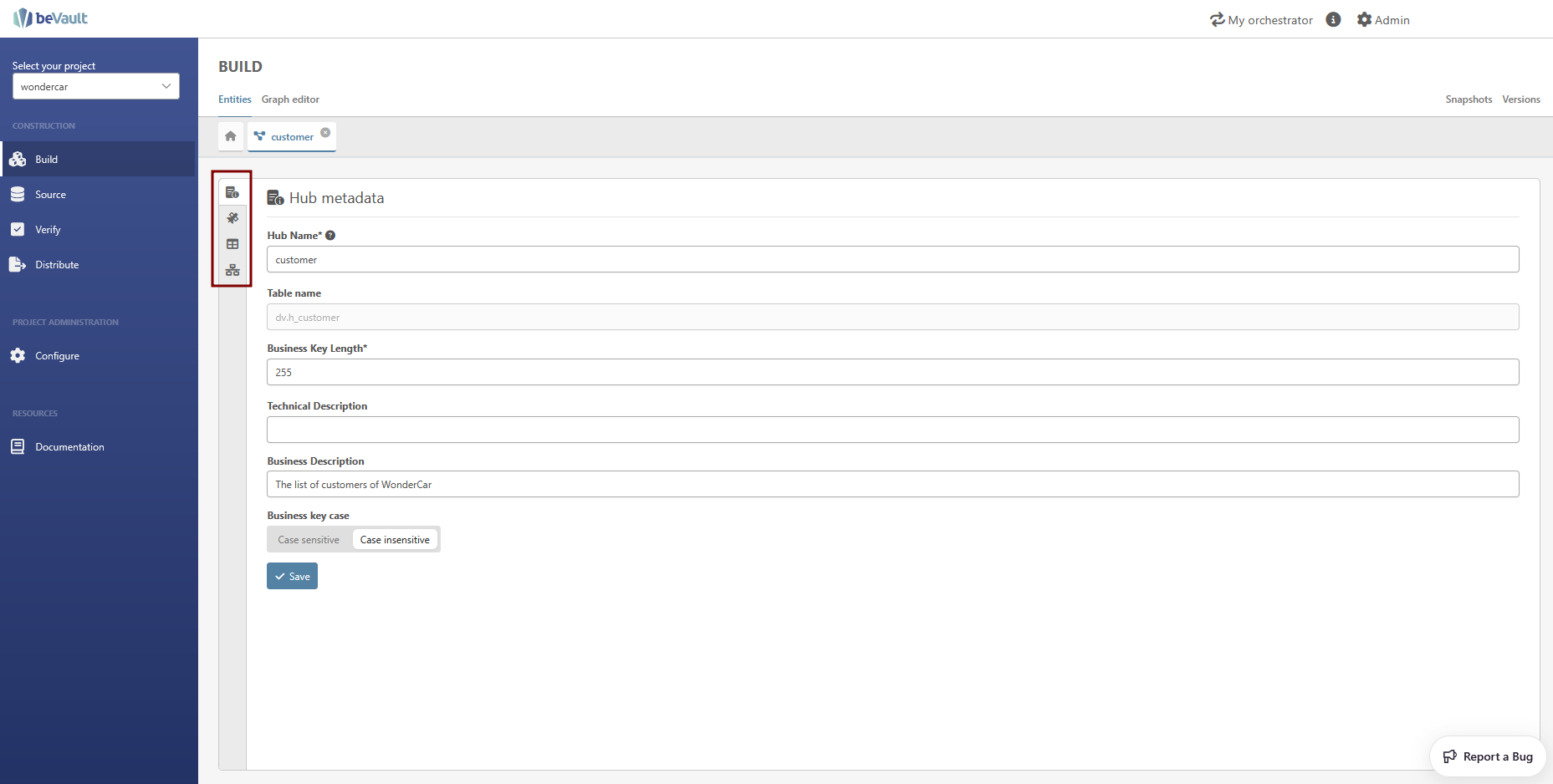
Metadata
This section contains descriptive information about the hub.
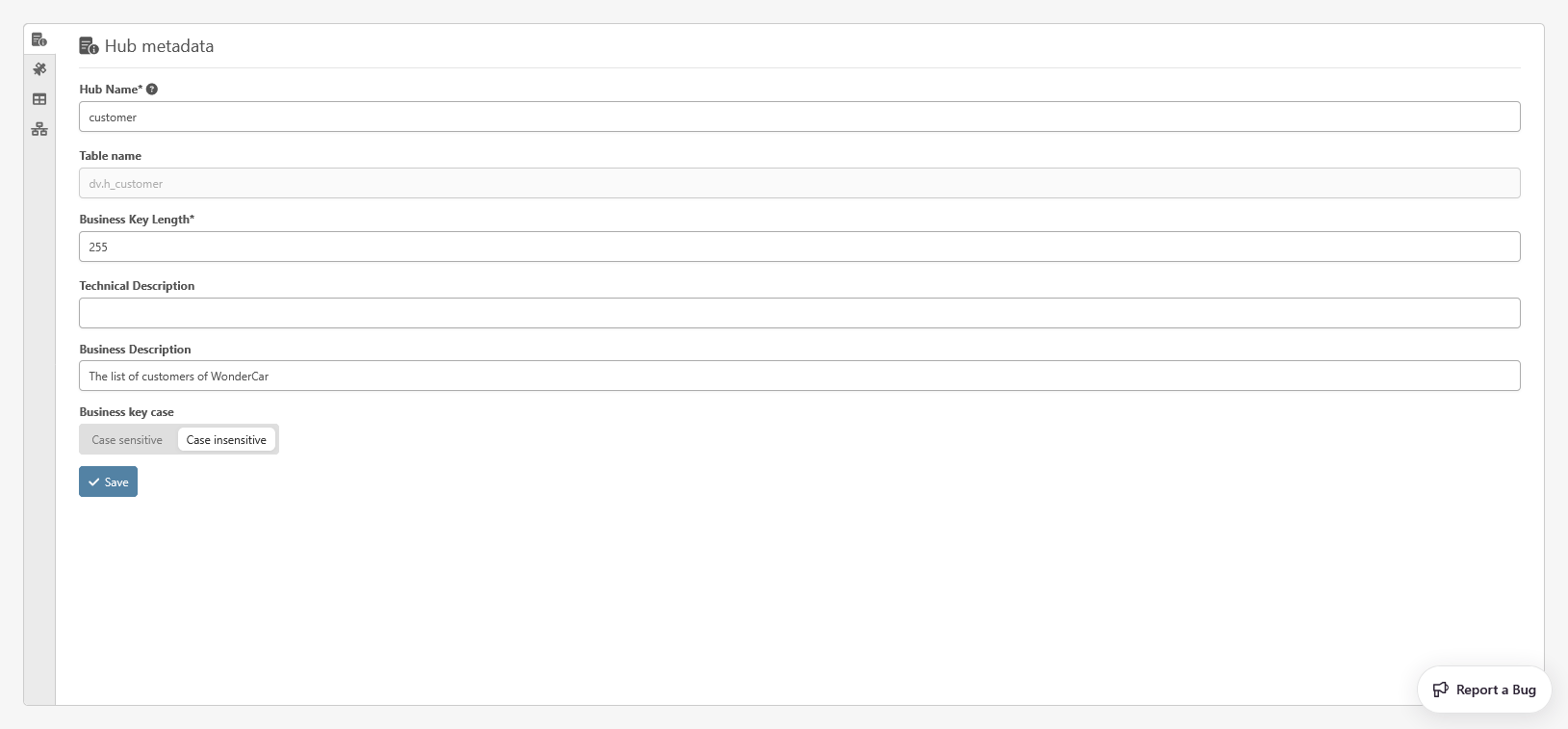
-
Hub Name (mandatory): The name of the hub. This name is used for the table name.
-
Table Name: The physical name of the hub's table in the database
-
Business Key Length (mandatory): In beVault, the business keys are always of type varchar (or equivalent, depending on the database it is deployed on). This is the length of the column in the database.
-
Technical Description: A description for the technical users
-
Business Description: a description for the business users
-
Use Context Satellite: When checked, a context satellite will be created for the hub. The context satellite is used to track the presence of a business key in different sources across time.
The button “Save” allows you to confirm and save the updated data in that section.
Satellites
This section contains the list of the satellites attached to the hub.
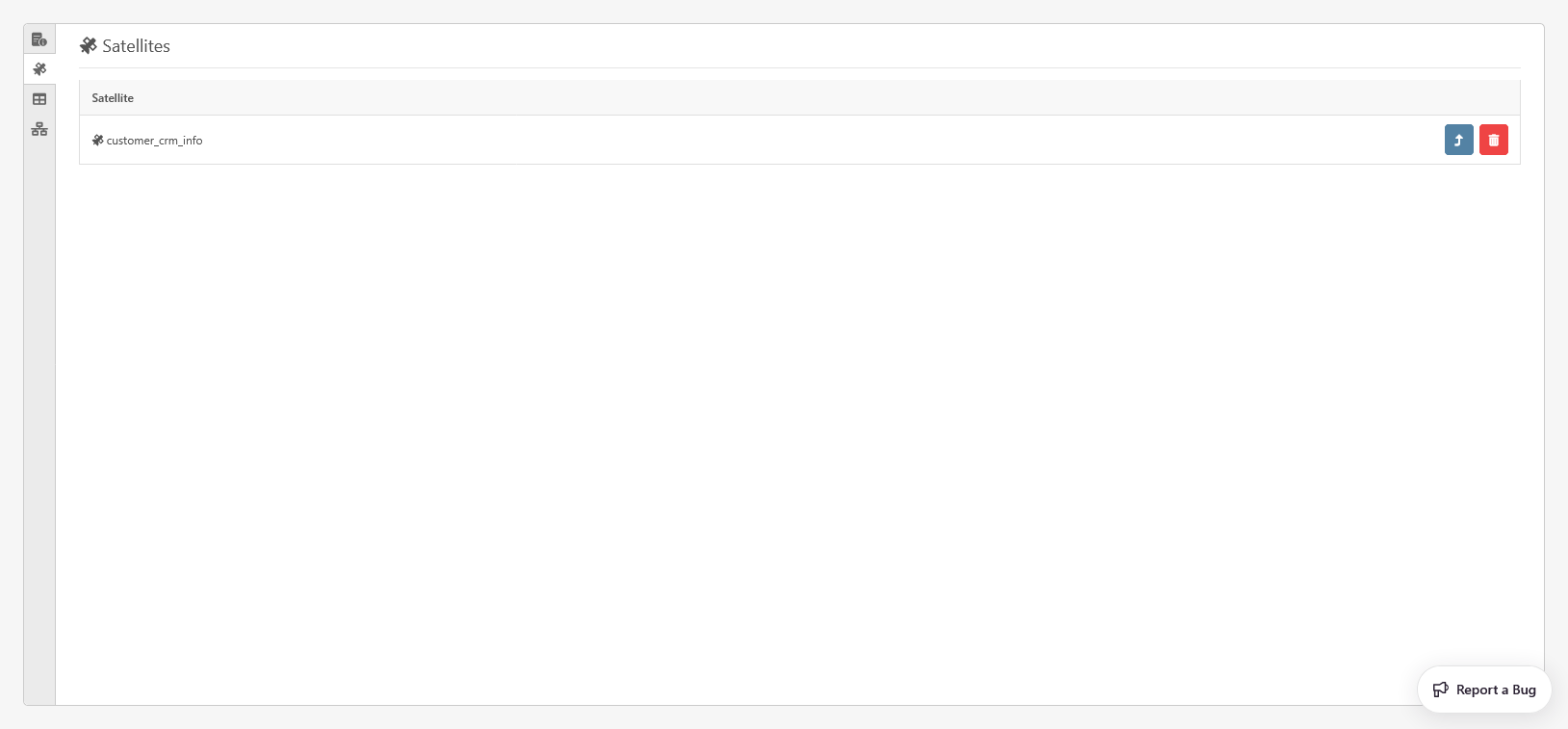
For each satellite, you can open its dynamic tab by clicking on the “Open in a new tab” button. This allows you to see the detailed information about the satellite.
The “delete” button deletes the satellite as well as its mapping.
Pit tables
This section allows you to manage the pit tables related to the hub.
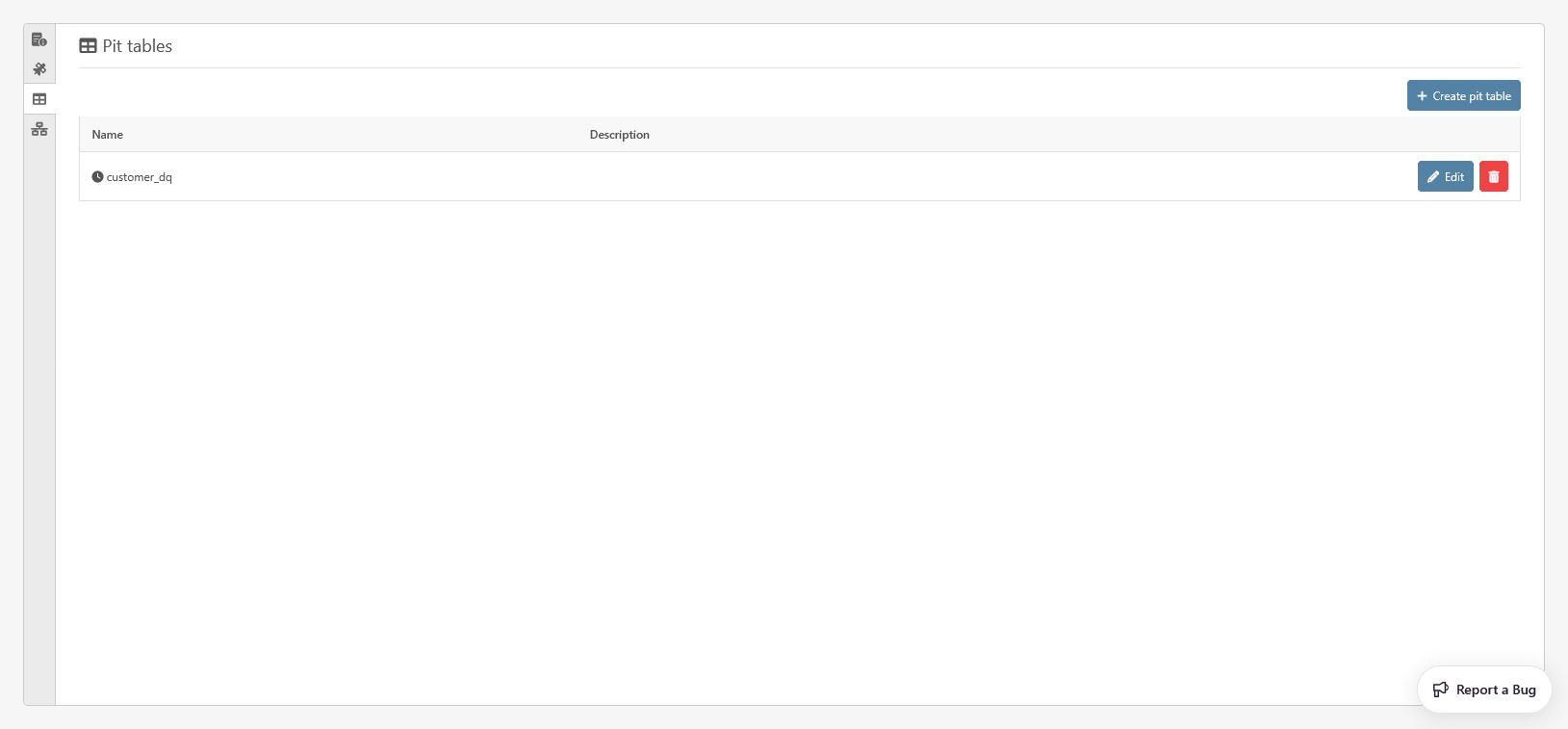
The list contains all the pit tables of the hub. For each pit table, you have :
-
Its name
-
A description
-
An “Edit” button
-
This button allows you to edit the description of the pit table

-
-
A red trashcan button
-
This button allows you to delete the pit table.
-

-
Create a new pit table
To create a new pit table, click on the dedicated “Create pit table” button in the upper-right corner of the section. This action will open the modal to create a new pit table.

-
Description (optional): provides a brief description of the utility of the pit table
-
Snapshot (mandatory): select the snapshot (https://dfakto.atlassian.net/l/cp/qA7DEXa1) used for the pit table data
-
The name of the pit table will have the following format: bv.pth_[hub_name]_[snapshot_name]
-
Please note that multi-active satellites will not be available in the PIT tables created through this feature
Mappings
This section is only available for users having the Read permission on the module Source
This section allows you to know where the hub is mapped. For each mapping, you will see the source system, the data package, and the ID of the mapping. You can also open the staging table (CFR Staging Tables ) of the mapping by clicking on the “Open in a new tab” button.
